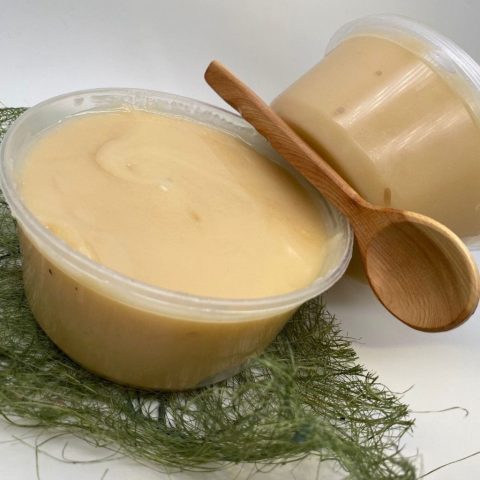Content
Alfalfa as a honey plant is not a particularly popular crop. It is much more popular as green manure or livestock feed. But beekeepers should definitely take a closer look at it: alfalfa has good productivity, the taste of honey is original and very pleasant.
Description and types
Alfalfa is a herbaceous perennial or subshrub of the Legume family. The height of the plant varies between 0.4-1 m; it is a fairly lush bush with relatively thin stems, intensively branching from the very base, densely dotted with small leaves. The honey plant is also distinguished by powerful, developed roots, often extending 4-10 m into the soil.
The properties of the honey plant of alfalfa ensure its flowering. It is abundant and long lasting. Flowers of bright yellow or purple color are collected in spherical or paniculate inflorescences of 12-13 pieces. They emit a clearly noticeable sweetish aroma, by which bees unmistakably identify alfalfa as a honey plant.
The undoubted advantage of culture is its endurance and resistance to stress. Alfalfa successfully survives frosts.In spring, its seeds germinate already at a soil temperature of 3-5 ºС, which allows it to outpace weeds. Properties do not suffer depending on the quality of the soil.

Alfalfa is in great demand in agriculture: it is at the same time a fodder crop, green manure and honey plant
Alfalfa as a honey plant
The hue of the numerous flowers of alfalfa varies from pastel lilac to rich lilac-violet. Due to their specific shape, honey plant nectar is located quite deep, but the long proboscis of southern bees allows it to be successfully extracted. The fact that pollination has taken place is indicated by the petals falling 2-3 hours after the insects attack.
This honey plant is cultivated mainly in the southern regions and central Russia. Compared to its relatives, alfalfa tolerates drought better. However, this does not mean that you can refuse watering. With a constant lack of moisture, the properties of the honey plant suffer greatly, as nectar production sharply decreases.

Of the varieties of alfalfa known to botanists, only two are grown as honey plants.
Alfalfa yellow
The name sickle yellow alfalfa is due to the shade of the petals and the specific shape of the leaf blades and flowers. The nectar in the flowers is shallow; bees easily process this honey plant.
However, without preliminary training, they do not show much interest in yellow alfalfa. So that insects can identify it as a honey plant, the bees are fed with sugar syrup infused with alfalfa while still in the hives.
Bees pollinate yellow alfalfa twice per season - in June and around mid-summer. At the same time, wild insects take sugary juice from every second honey plant flower, and beekeepers only from the fortieth one. However, it is the latter that collect nectar, the former prefer pollen.

Yellow alfalfa is most productive as a honey plant at an air temperature of 26-30 ºС and constant moderate soil moisture
Honey productivity of alfalfa
Honey plant productivity varies greatly. For seed alfalfa it is 20-100, for yellow crescent – 30-300 kg per hectare. To pollinate such an area sown with honey plants, the joint efforts of 10-12 strong bee families are needed.
In order for them to work more actively, they are simultaneously fed with sugar syrup infused with alfalfa. Another know-how of beekeepers is to regularly take measures to ensure that there are as few competing honey plants as possible in alfalfa plantings.

Honey productivity depends on whether grass is mowed, as well as on the level of soil moisture and regularity of watering.
Flowering period
Both varieties of alfalfa, used as honey plants, begin to bloom in the second half of June. However, for the yellow crescent, the flowering period extends almost until mid-autumn, while for the sowing one it stops after about a month.
Properties of alfalfa honey
The main feature of alfalfa honey is that it quickly sugars. After this, the shade changes from natural to whitish; the consistency of honey now resembles low-fat sour cream.
Alfalfa is in demand as a honey plant, including due to the healing properties of the finished product. They are provided by a rich chemical composition:
- Natural sugars;
- amino acids and organic acids);
- vitamins;
- macro- and microelements.

Both varieties of honey plant produce honey that is almost identical in properties and taste.
Indications and contraindications for use
The product obtained from the alfalfa honey plant is recommended to be included in the diet in the following cases:
- maintaining the general tone of the body, strengthening the immune system;
- the need for a speedy recovery after a serious illness or surgery;
- seasonal colds and viral diseases (flu, ARVI);
- dermatological diseases, burns, abrasions, other mechanical damage to the skin;
- diseases of the digestive system, their prevention;
- problems with the heart and blood vessels;
- pathologies of the liver and gall bladder.

The benefits of honey for colds are recognized by both traditional and official medicine.
However, in some cases you will have to stop using alfalfa honey:
- individual intolerance;
- diabetes;
- diagnosis of obesity or simply overweight;
- hypotension.

The symptoms and severity of a honey allergy can vary greatly.
Conclusion
Alfalfa as a honey plant is just one of the options for using a plant that is very popular in the agricultural sector.Beekeepers value it for its combination of fairly high productivity and very good taste of honey with general endurance and ease of cultivation. However, despite the undoubted health benefits, alfalfa honey has contraindications for use, which must be taken into account.
Reviews about alfalfa as a honey plant








